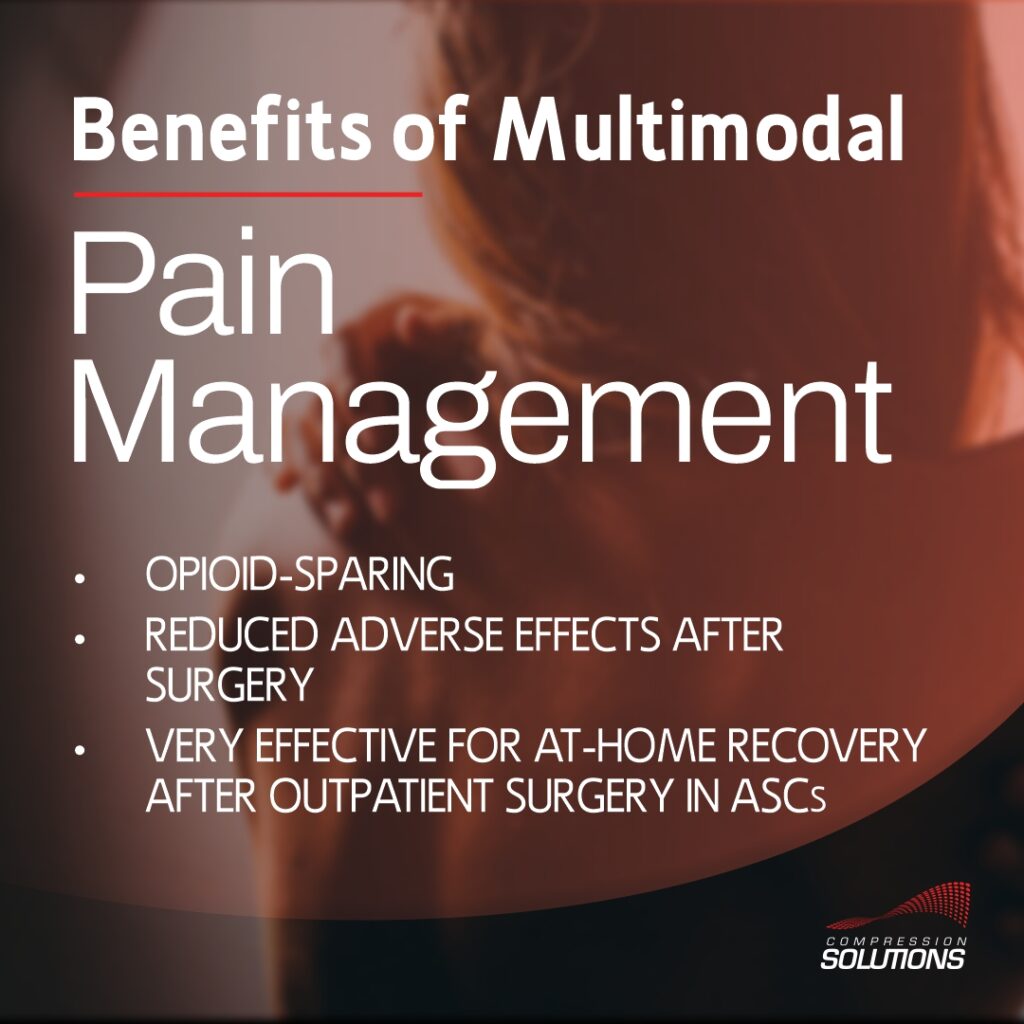Acute pain can be excruciatingly high after surgery and patients need support to help them deal with this agony. An effective pain management plan can help patients recover faster and reduce complications after surgery.1,2 Traditionally, postoperative pain management relied on narcotics like opioids.
However, in recent years, more providers have been turning to multimodal pain management as the preferred way to manage pain after surgery. In fact, it is now the standard of care for total joint surgeries and many other elective procedures.
What is multimodal pain management?
Multimodal pain management is the method of treating postoperative pain using a mix of different types of systemic and local analgesic medications like:
- Acetaminophen (Tylenol) – oral and intravenous
- NSAIDs like Advil
- Gabapentin (preoperative)
- Ketamine
- Peripheral nerve blocks and more
Along with medication, providers may use devices like compression stockings or sleeves, pain pumps, and more to ease a patient’s pain after surgery.

Benefits of multimodal pain management
Opioid-sparing
An opioid-sparing approach works well in treating postoperative pain. It has been shown to provide pain relief, and reduce adverse effects after surgery. A huge benefit is that this type of treatment can be a powerful way to lower levels of opioid dependency in the country.
Over the past few decades, America has been in the throes of a massive opioid crisis caused by the over-prescription and misuse of narcotics. According to the CDC, 187 people die from opioid overdose, every day.
Research shows that 5.9% of patients who underwent minor surgical procedures and 6.5% of those who underwent intensive surgeries become persistent opioid users. 15% of patients develop opioid dependence after total knee arthroplasty (TKA) surgery.3 A CDC report shows that even ten days on opioids can lead to opioid dependency.4
Multimodal pain management provides healthcare professionals and patients alike with a better alternative.
Reduced adverse effects after surgery
Opioids can cause a multitude of postoperative issues, like nausea, vomiting, constipation, urinary retention, cardiac abnormalities, respiratory issues, and even extreme sensitivity to pain (hyperalgesia).2,5,6
But the biggest problem with opioids is their highly addictive nature. Commonly used opioids are morphine, fentanyl, methadone, and tramadol. The World Health Organization (WHO) estimates that out of all deaths from drug use, 70% are related to opioids, and over 30% of these deaths are caused by overdose. Minimizing opioid use after surgery can help reduce postoperative complications and the risk of addiction.7
An opioid-sparing approach also lowers the risk of drug diversion when prescription medicines are procured and used illegally. According to the Centers for Medicare and Medicaid Services (CMS), more than a million people a year end up in emergency rooms for taking medications incorrectly.8
Very effective for at-home recovery after outpatient surgery in ASCs
Ambulatory Surgery Centers (ASCs) are becoming popular destinations for outpatient procedures. Patients prefer the cost-efficient low-risk procedures and same-day discharges that ASCs offer. However, with patients getting discharged soon after surgery, pain management at home becomes important.
Most patients suffer severe to moderate pain within 24-48 hours after surgery. Still, less than half report satisfactory postoperative pain relief.9,10 Pain control after surgery is important to help patients reduce post-surgical complications, get mobile faster, and ease recovery. However, many patients are highly dissatisfied with their pain management solutions.11-13
Surgeons need simple, user-friendly pain protocols for patients to follow. An opioid-sparing approach can be highly beneficial.
How is multimodal pain medication delivered to patients?
Multimodal pain management is often a combination of oral and intravenous medication based on each patient’s needs. Oral medicines may take a little longer to offer pain relief than intravenous methods, but it is easier to taper patients off these therapies.
Many ASCs also use pain management devices to help deliver analgesics in a controlled fashion. Patient-controlled analgesia (PCA) can help surgeons and their patients control breakthrough pain and manage their medication dose easily. Pain pumps like the ambIT electronic pain pump can be pre-programmed to deliver the correct dose at the right time.
The ambit pump has been proven to reduce opioid use significantly and shorten hospital stays.14,15 Another benefit of PCA is that it can be personalized based on each patient’s needs. Healthcare professionals can create and administer a custom multimodal pain management strategy based on the type of surgery, comorbidities, and other parameters. This way, patients can take charge and be actively engaged in their recovery.
Learn more about managing acute pain by signing up for our monthly email.
Get ambIT for Your Facility
Equip your hospital or surgery center with ambIT pain pump devices, including convenient medical billing and customer support when you order through Compression Solutions.
